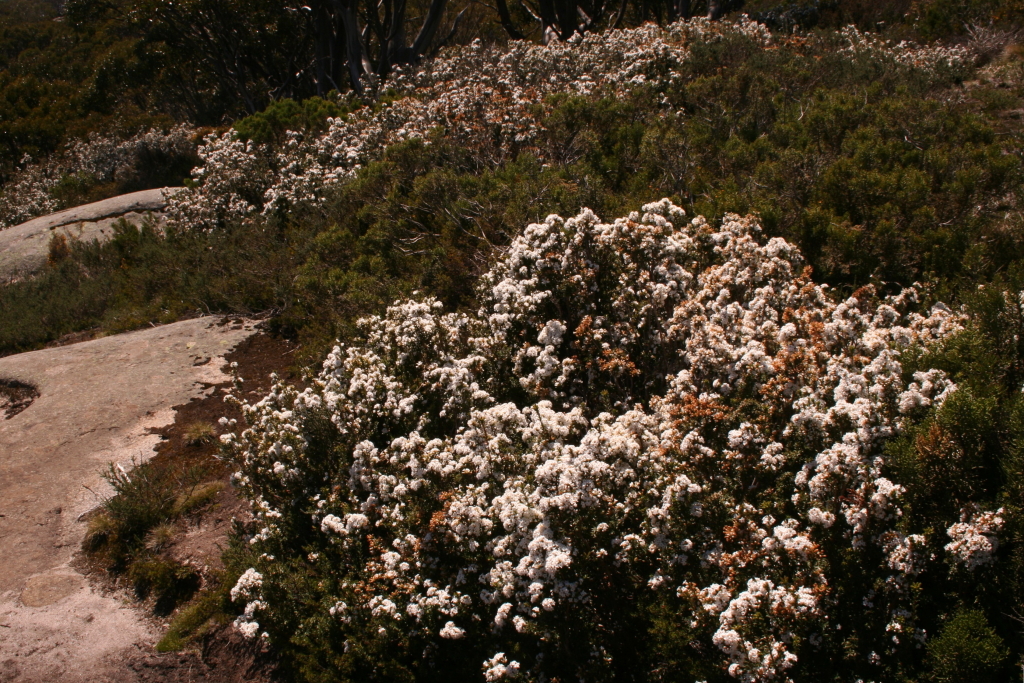Epacris paludosa
R.Br. Swamp HeathBushy to erect shrub to c. 1.6 m high. Branchlets puberulent to tomentose. Leaves erect to spreading, lanceolate to elliptic-ovate, 5–13 mm long, (1–)1.5–3 mm wide, glabrous, flat or concave, 1–3-nerved beneath, midvein often slightly keeled; apex acuminate, mucronate; margins minutely serrulate; base cuneate; petiole c. 1 mm long. Flowers subsessile or shortly pedicellate in axils, forming terminal clusters or crowded along the upper c. 6 cm of branchlets; bracts 14–22; sepals ovate, 4–5.5 mm long, acute to acuminate; corolla white, tubular to narrowly campanulate, tube 4–6 mm long, equal to or slightly exceeding calyx, scaberulous internally, lobes 2–4 mm long, obtuse; anthers enclosed or rarely exserted; ovary glabrous, nectary scales triangular, style slightly thicker in middle third, glabrous, 4–6 mm long. Flowers Jul.–Jan.
GipP, EGL, EGU, HSF, HNF, MonT, HFE, VAlp. Also NSW, ACT, Tas. Mostly occurring in montane to subalpine bogs and stream margins, where common and often dominant, but scattered populations also occur in lowland wet heaths in East Gippsland.
Albrecht, D.E. (1996). Epacridaceae. In: Walsh, N.G.; Entwisle, T.J., Flora of Victoria Vol. 3, Dicotyledons Winteraceae to Myrtaceae, pp. 464–509. Inkata Press, Melbourne.
 Spinning
Spinning

